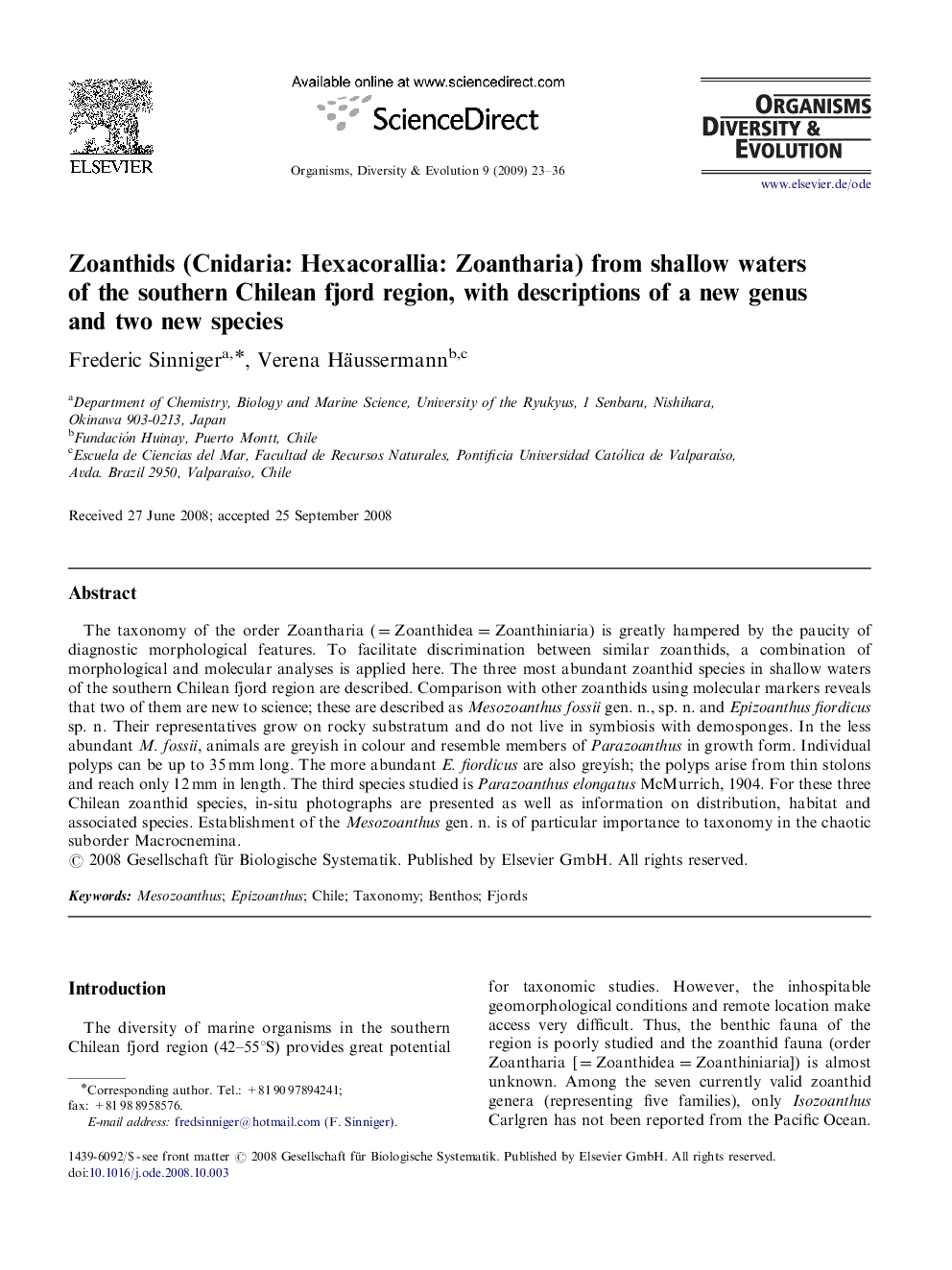| Article ID | Journal | Published Year | Pages | File Type |
|---|---|---|---|---|
| 4458656 | Organisms Diversity & Evolution | 2009 | 14 Pages |
The taxonomy of the order Zoantharia (=Zoanthidea=Zoanthiniaria) is greatly hampered by the paucity of diagnostic morphological features. To facilitate discrimination between similar zoanthids, a combination of morphological and molecular analyses is applied here. The three most abundant zoanthid species in shallow waters of the southern Chilean fjord region are described. Comparison with other zoanthids using molecular markers reveals that two of them are new to science; these are described as Mesozoanthus fossii gen. n., sp. n. and Epizoanthus fiordicus sp. n. Their representatives grow on rocky substratum and do not live in symbiosis with demosponges. In the less abundant M. fossii, animals are greyish in colour and resemble members of Parazoanthus in growth form. Individual polyps can be up to 35 mm long. The more abundant E. fiordicus are also greyish; the polyps arise from thin stolons and reach only 12 mm in length. The third species studied is Parazoanthus elongatus McMurrich, 1904. For these three Chilean zoanthid species, in-situ photographs are presented as well as information on distribution, habitat and associated species. Establishment of the Mesozoanthus gen. n. is of particular importance to taxonomy in the chaotic suborder Macrocnemina.
